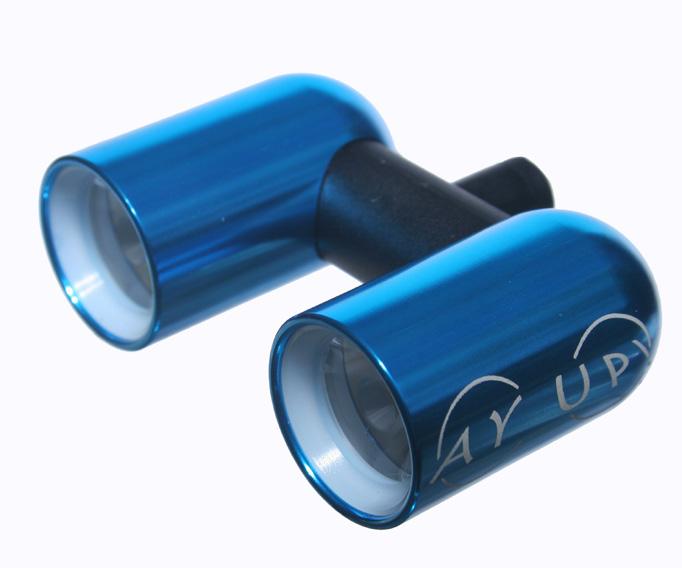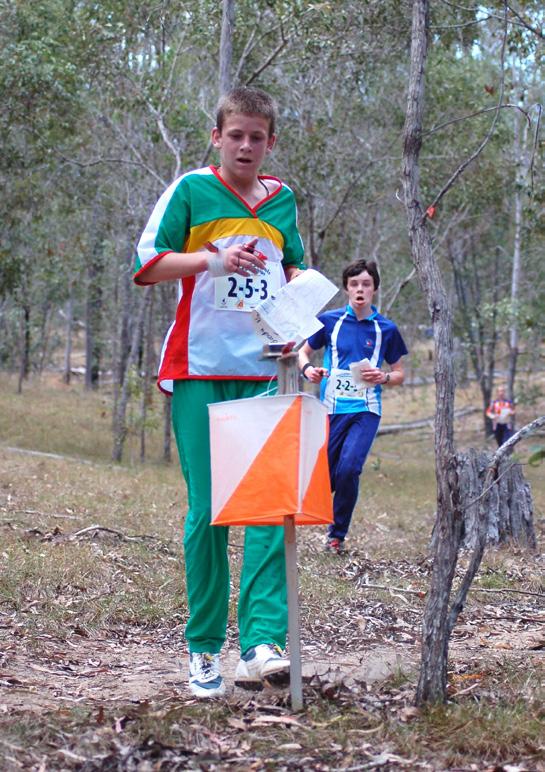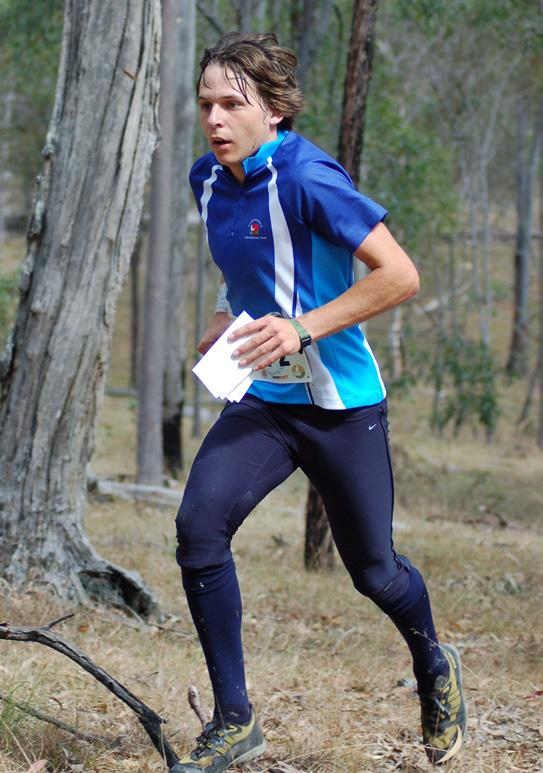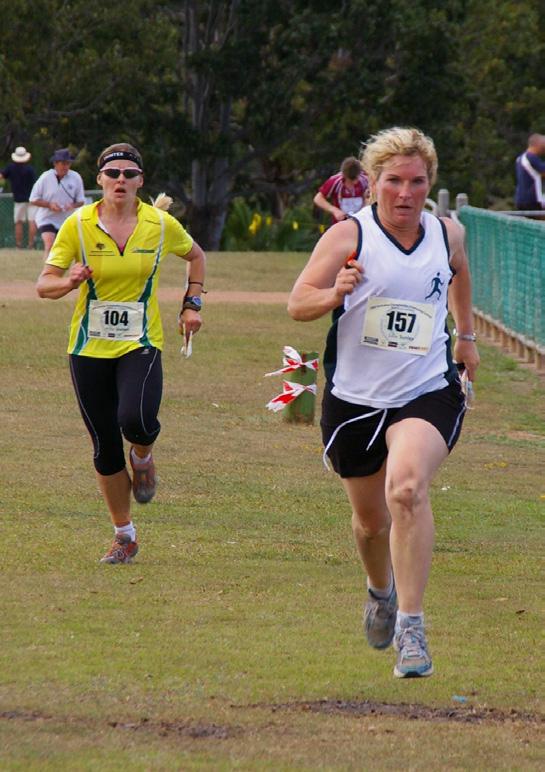
7 minute read
AY UP LIGHTING
David Shepherd
On June 21st, midwinter, in our nations capital the sun is above the horizon between 7:12AM and 4:58PM. If you spend nine of those hours at work and getting to/from work there isn’t much time left for training! Training at night is a familiar activity for European orienteers and has become more so for orienteers here in Australia. Apart from in Melbourne where more than 100 competitors race in several events each week during the winter, there’s a lack of any real night Orienteering races on the OA calendar meaning that orienteers in other States never race at night.
However the rising popularity of adventure races and marathon MTB races (such as CORC’s Scott 24 hour) means many orienteers are racing through the night. The ACTAS squad owns 15 Silva and Mila headlamps which are regularly used by the Canberra Cockatoos for orienteering, running, commuting, mountain biking... These headlamps are worth a small fortune, have heavy batteries and don’t fit on anything other than your head. Besides, the technology used in those lights (halogen globes, NiMH batteries) is older than mobile phones. Imagine you were still using a big car phone thing like Nice Guy Eddie in Reservoir Dogs. While Silva and Mila are developing LED (light emitting diode) lights, the real advances are happening in the bike light market. LED lightsets are light (weight!), tough, easy to use and put out a bright, white light. Just a note of warning, this article is a John Laws style product review. Ay Up Lighting have generously sponsored me and given me several of their LED lightsets for orienteering/running and cycling. News just in: Ay Ups are awesome, know what I mean? Ay Up Lighting was started in Brisbane a couple of years ago. The Australian company has developed a reliable lighting system with super low weight, long burn time, high light output and low cost. They plan to continue to evolve the system and incorporate advances in LED and battery technology. Their lights have been designed to be a multi purpose unit suitable for running/ orienteering, mountain and road cycling, adventure sports, hiking, climbing/trekking, camping, kayaking, caving, and anything else requiring light bright lights.
The Lightset
When all is said and done the most important thing for night Orienteering is light. Bright and reliable light. Most orienteers (and mountain bikers) have had some sort of problem with their light. Circuitry, vibration, switch, plugs and water have all played a part. Ay Up lights are bombproof, the units are fully sealed (waterproof to 5m, means you can snorkel with it!) anodised aluminium shells which weigh just over 50 grams. They say “You break it .... we want it back - a new set will be delivered to your door as soon as physically possible”. A lightset is actually 2 lights, each LED encased in a separate shell. There are 12 colour choices for the shell so you can choose one that doesn’t clash with your bike (or your hair). The light has a cool white tint and has three beam width options; narrow, intermediate and medium. The narrow beam is recommended for use on the helmet and intermediate on the handlebars. The medium beam has a much wider spread and is good for running and orienteering, but the intermediate beam has a better throw and is my choice. The lights can be independently rotated so with an intermediate lens you can widen the beam if it’s too narrow. For cycling you probably want less spread and more throw, so the intermediate is a good choice for someone wanting to use the light for both sports. I found the throw on the medium beam a little too short for the MTB. The best set up for cycling is narrow on the helmet and a wider beam on the bars, which gives you the best of both worlds. The LEDs are currently CREE XRE, but Ay Up uses the LEDs with the highest possible flux bin they can buy. The technology in LEDs is advancing every day. Before we talk numbers we need a quick science lesson. A lumen is the unit of luminous flux, it gives a number to the power of light in the way that the kilowatt does to the power of the engine in your car. Now the numbers: each lightset outputs over 300 lumens, not as many of the little fellas
An Ay Up lightset

as the Lupine or Öhlund orienteering lights - but the Ay Ups don’t have 4 numbers on the price tag (more about that later). The 3 hour burn battery will run at full power for 3 hours (and the 6 hour battery for a surprising 6 hours) then slowly dim to the brightness of a good torch for up to 8 hours. Plenty of time to get back to the car if you had more problems hitting controls in the dark than you thought you would! The mountings are probably the neatest aspect of the Ay Up lightset. The helmet and bar mountings are streamlined mountanywhere brackets that you can leave on your bike or helmet (cable tie or velco). The Headband kit has a clip-in light mount, 3hr battery mount and velcro straps, wire clips and a 3 point elasticated harness. A small rubber strap keeps the lights in place. It only takes a few seconds to swap lights from your head to the MTB to the roadie. The batteries are custom made for Ay Up. They’re lithium-ion polymer (LiPo), a sort of evolved lithium-ion (used in most modern mobile phones). LiPo has super high energy density and is robust enough to drop onto concrete (if you’re into that). What does this mean for you? Lightweight batteries which last. They are protected from short circuit, over voltage, low voltage and water. The kits come with either a single or dual battery charger which run off 12VDC – plug the charger into the cigarette lighter in your car or into the wall at home with the supplied power adaptor. You can’t go wrong. And it only takes 2.5 hours for a full charge. Now for more numbers, this time they’re even more impressive. The LiPo batteries weigh only 70g and 130g for the 3 and 6-hour units respectively. So with the headstrap you can be running for 3 hours with over 300 lumens illuminating the forest and only 200 grams on your head!
The Price
Now for probably the numbers that will make the decision for you - the price. You can get a basic kit for $270. This will get you a lightset, 6 hours of battery power and charging gear plus mounts for your helmet and couple of bikes. For an extra $220 you get another lightset and two 3-hour batteries (MTB kit). The headstrap costs an extra $20. If you can’t choose between beams and battery sizes then the Enduro kit has it all for $650.
The Summary

Australian Mountain Bike Magazine gave the Ay Up lightset 9 out of 10. The only lightsets with higher ratings were two Lupine LEDs, which cost $950 (Wilma) and $1400 (Betty), and a HID Technologies helmet mounted system (Lumen8r) which will set you back about the same as the Ay Up MTB kit. HID (high intensity discharge) lights are among the brightest money can buy, but are a little heavier and a lot more fragile than LEDs. If its pure lumens you’re after, the sky’s the limit. But the Ay Up package combined with their low weight and price is hard to beat. If you want an affordable, versatile lightset that beats the run-ofthe-mill orienteering lights hands down, then go for the Ay Ups.


Josh Blatchford (NSW), 2nd in Senior Boys. Photo: Rob Preston

Julie Sunley (VIC) leads Anna Sheldon (QLD) to the finish in the W21E Sprint. Photo: Peter Yeates Brodie Nankervis (TAS) in Junior Boys. Photo: Rob Preston










